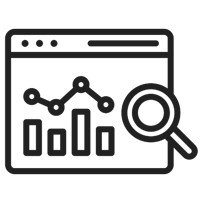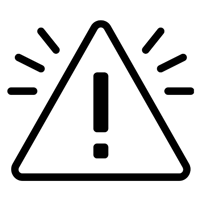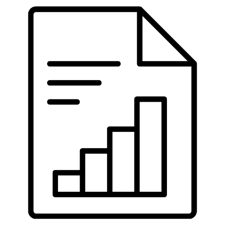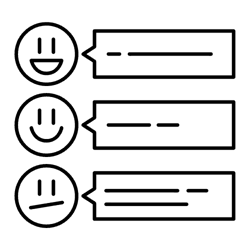Understand the results in Woba
A guide to understanding the results in Woba
A survey is only useful if its results are utilized. Therefore, understanding and interpreting the results of a workplace assessment, an employee satisfaction survey, or a similar survey is crucial to identify potential issues and implement measures to improve the work environment and create a healthier and more productive workplace.

In Woba Analytics, the results of a survey are presented in various ways, to help you see what works well and what needs improvement in your department or company. This allows you to quickly and easily identify areas that require action.
Fundamentally, there are four different places to view results in Woba Analytics:
1. Overview
Creating an overview of all the data from a survey can be an overwhelming task. In Woba Analytics, this task is made easy and simple by presenting the most important key results from your survey in a clear and concise image in the Overview. Therefore, it is a good idea to start by looking at the Overview when you have completed a survey.
- If it is your first time looking at data in the Overview, you can learn more here: → Walkthrough of the Overview
- Once you understand the structure of the Overview but would like to learn more about how to read and interpret the information, you can find more information here: → Reading data in the Overview
 2. Risk Map
2. Risk Map
After obtaining an overview of the survey results, it's time to get a more detailed picture. The Risk Map is an excellent tool for comparing data and identifying risks and resources across departments, so you can quickly see where immediate action is needed.
- If it is your first time looking at data in the Risk Map, you can learn more here: → Walkthrough of the Risk Map
- Once you understand the structure of the Risk Map but would like to learn more about how to read and interpret the information, you can find more information here: → Reading data in the Risk Map
- All fields with results in the Risk Map are interactive, which means that you can click on them to get more detailed data about the results. You can learn more about how to dive into the Risk Map here: → Dive into the Risk Map
3. Report
When you have understood the results of a survey, it is often relevant to be able to communicate or present it to others. Here, the Report in Woba Analytics is a great tool. In the Report, all results for a selected survey and filtering are presented with the most important results in a format that is easy to interpret, even for new users of Woba.
- You can learn how to download a report in either PDF or PowerPoint here: → Download reports with results
- Once you have downloaded a report but would like to learn more about how to read and interpret the information, you can find more information here: → How to read your report
4. Comments

Comments in a survey provide additional context and feedback that cannot be captured through closed-ended questions. They provide more detailed information about participants' experiences and attitudes and can help to elaborate on their responses.
Comments can also highlight strengths and weaknesses and provide valuable feedback for future improvements. Besides this, they can also help to increase the response rate, as respondents feel that their opinions are important and valued. Therefore, it is important to look at comments and take them seriously after conducting a survey.
- You can see where to view comments in Woba Analytics here: → View comments from a survey
- If you wish to access comments outside of Woba, you can export them to a spreadsheet. See how here: → Export comments
Tip: when you understand your department's or company's focus and risk areas, it's time to take action. You can read more about how to take action with Woba here: → Take action with Woba
